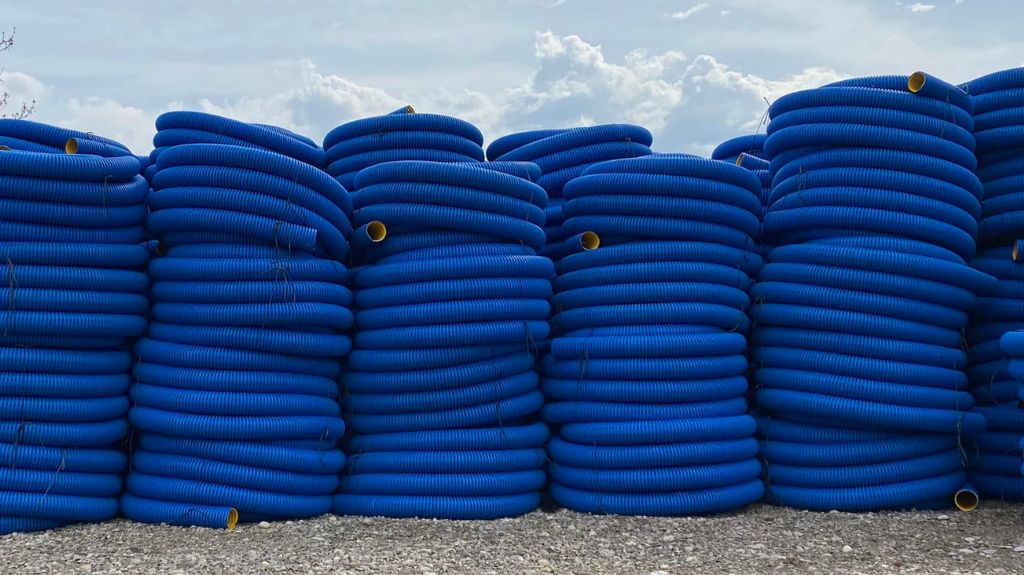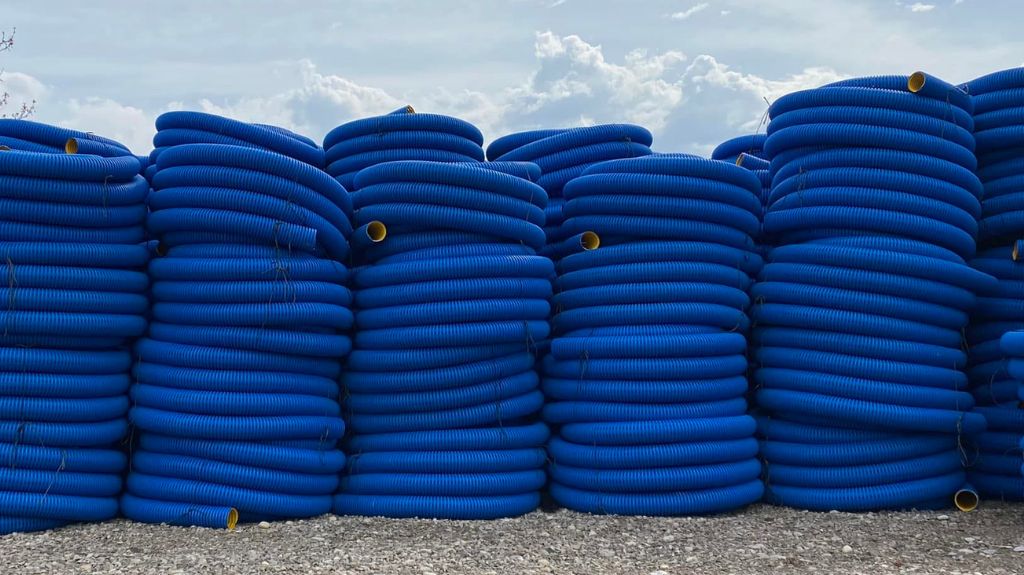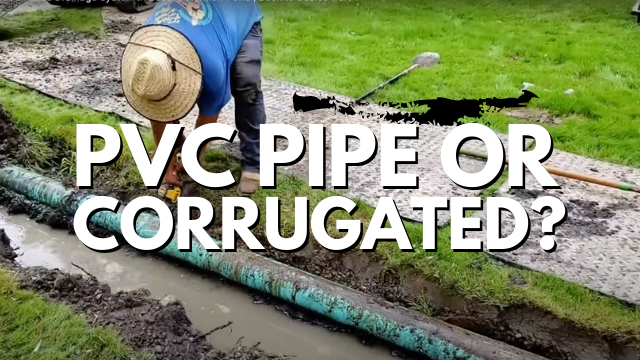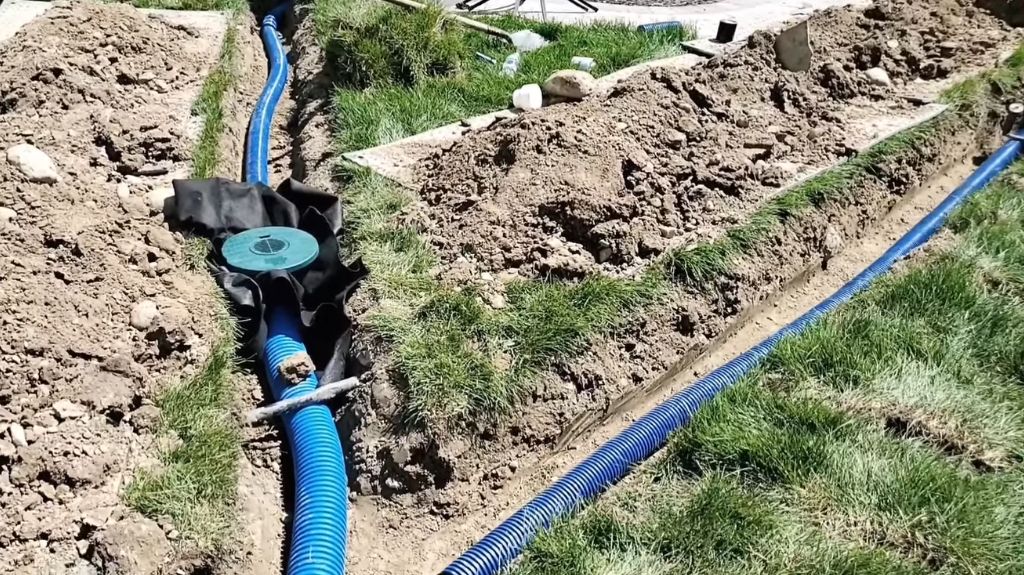
After 35 years in the yard drainage industry, we’ve seen homeowners and contractors use an assortment of materials to move roof water away from homes. However, not all materials are created equally. Not using suitable materials or not designing your buried downspout to work with your yard can lead to issues down the line. So, when it comes to downspout drainage which pipe is best for your yard?
Use a Solid Downspout Drainage Pipe, Not Perforated
When setting up your downspout drainage system, it’s important to keep your end goal in mind: moving all roof runoff water as far as possible from your house and foundation. Choosing the wrong downspout pipe, like a perforated pipe, defeats the purpose and allows water to leach through the line near the home’s foundation.
Instead, homeowners should use a solid corrugated pipe when burying downspouts. Solid pipe is the best option because it’s flexible and can be run in one piece.
Corrugated Pipe Provides More Flexibility Than PVC
Homeowners in the North need to consider what happens to their drainage system in the frigid, freezing winter months, while those in the sunbelt region will need to anticipate the ground shifting. Due to it’s strength and flexibility, solid corrugated pipe is the best pipe to direct downspout water away from your home
Winter frosts can lift driveways, patios, and sidewalks. Water left in a downspout drainage line can freeze up, split, or crack. That’s why selecting the correct drainage materials for your yard is imperative. Solid corrugated pipe expands when ice backs up in the line and contracts during the thaw to move moisture away from the house.
When designing your system, always plan to run an additional pipe to the front or back (depending on which direction is downhill) to guide the water to a designated discharge area, like a city storm drain, pop up emitter or inline catch basin. Some homeowners make the mistake of running their downspouts to the property line on the sides of their homes. That can result in runoff water trapped between their home and their neighbor’s home. By designing your system to utilize a flexible solid corrugated pipe on a downward slope, you can control the flow of water and direct it to an area to safely discharge.
Shop FDM’s New! High Octane Armor solid corrugated pipe
3 in. Corrugated Pipe Increases Velocity of Downspouts
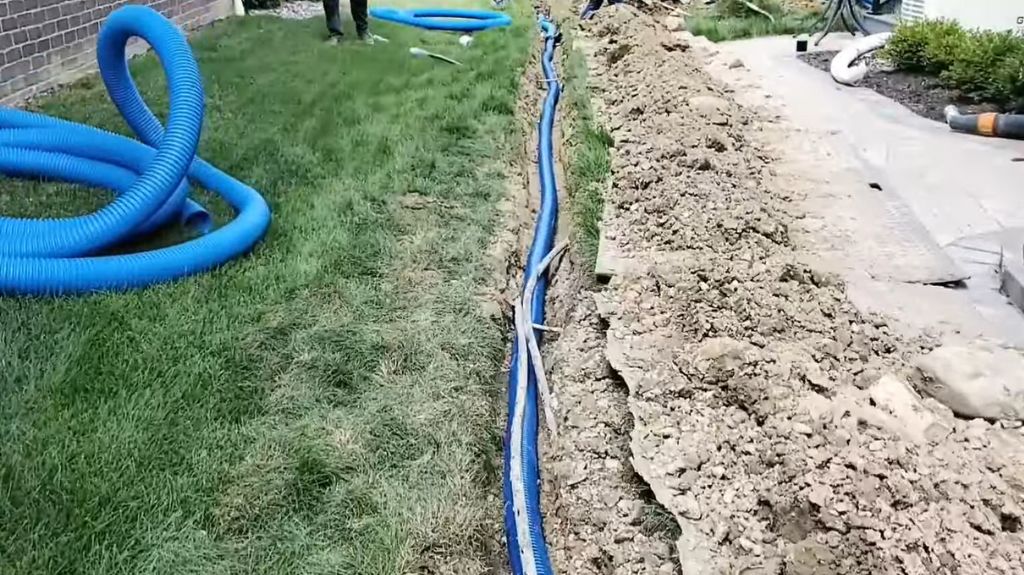
Shop FDM’s online store: 3 in corrugated solid pipe
While 4-inch corrugated is the industry standard, there are several reasons why a 3-inch downspout pipe could be the right choice for particular drainage application.
- 3-inch corrugated pipe moves roof runoff water at a higher velocity. Homeowners need as much velocity as possible to effectively move water through their downspout drainage pipe and away from home.
- 3-inch corrugated pipe is the easiest pipe for DIYers to install and allows homeowners to stay shallow when burying it.
- Using a 3-inch corrugated pipe, which allows you to stay shallow, makes it easier to create a slope. Your system should always have at least a 1% slope to maximize water velocity.
- 3-inch corrugated pipe has a higher water pressure than a 4-inch. That higher water pressure helps prevent clogging.
For example, we recently had a job where we had to go under a retaining wall. Since the side of the home was flat, as most are, it didn’t make sense to use a 4-inch pipe. A 4-inch downspout drainage pipe would have forced us to go deeper and compromised any slope we could create on the side of the house. Instead, we kept our 1% slope and water velocity high by using a 3-inch corrugated pipe.
Check out our Video Playlist on Everything Downspouts
The Authority on Downspout Drainage, French Drain Man
French Drain Man’s 35 years of drainage experience has made them the authority on everything yard drainage related. No detail is too small when it comes to providing yard drainage solutions to homeowners. From providing practical tips to DIYers, crafting purpose-built parts, and professionally installing drainage systems, we offer drainage solutions built to last a lifetime.




